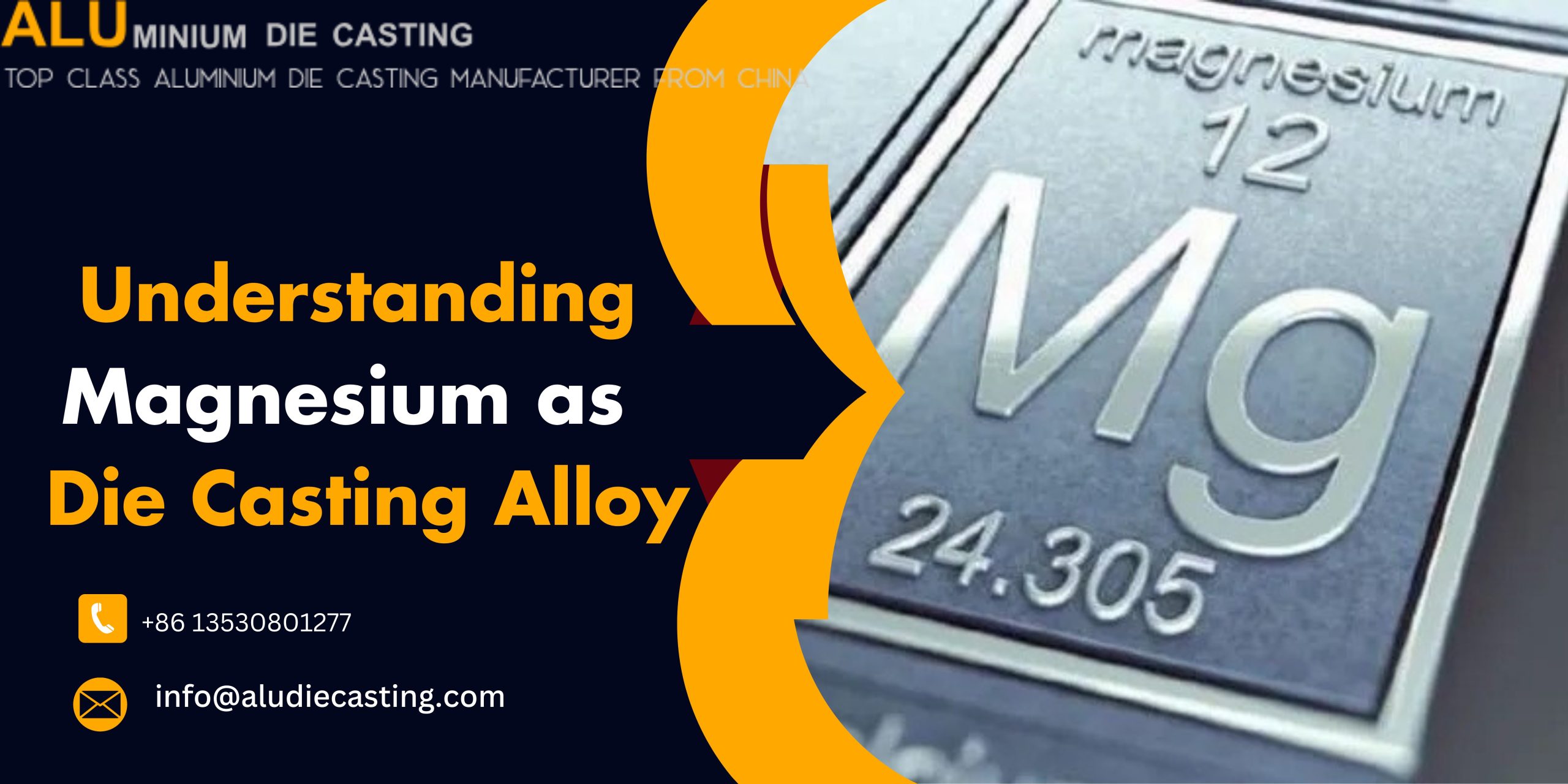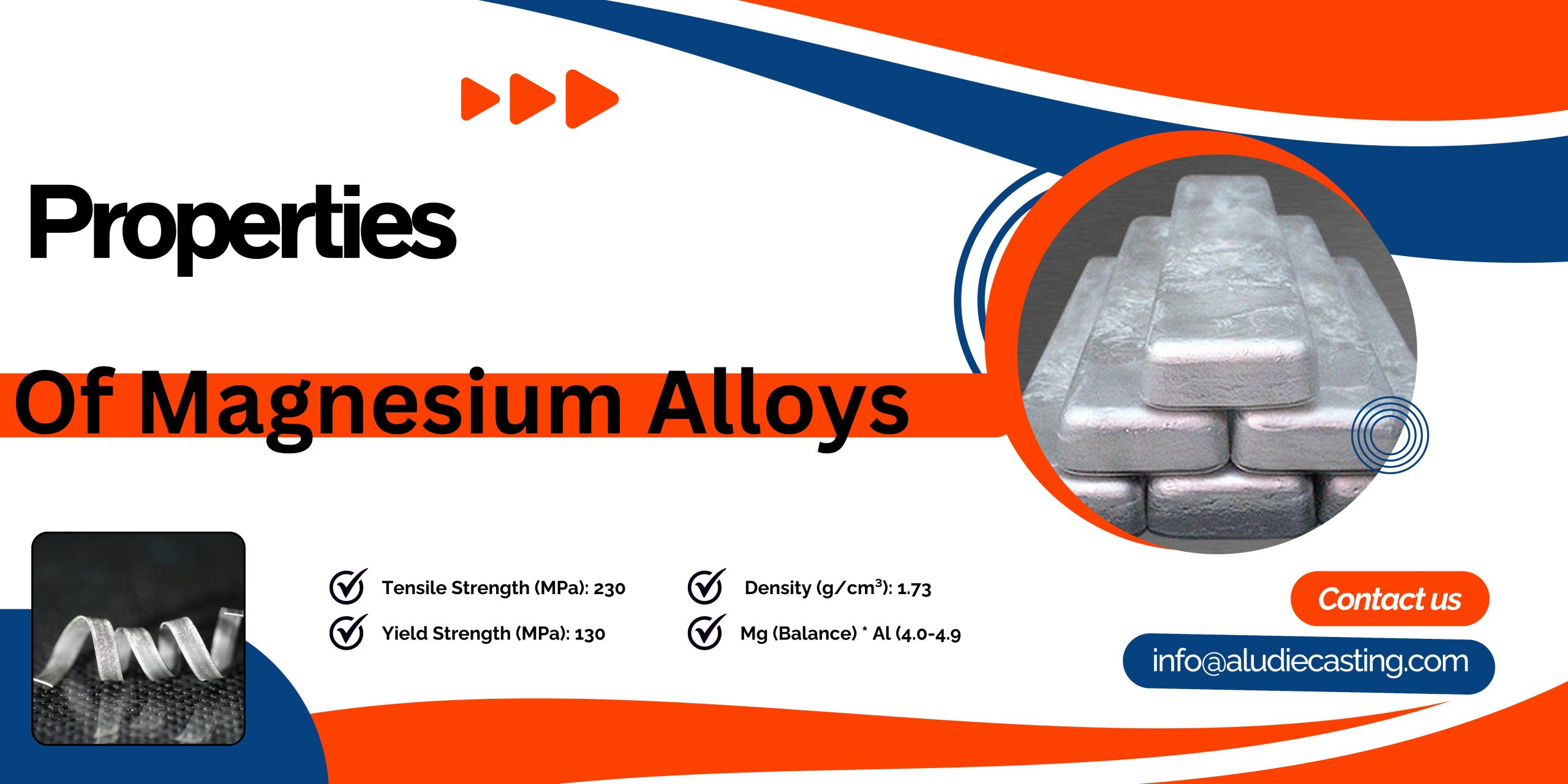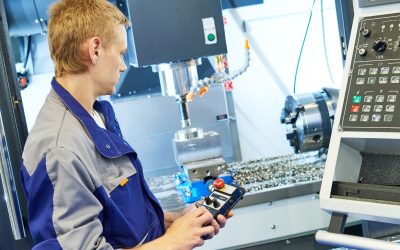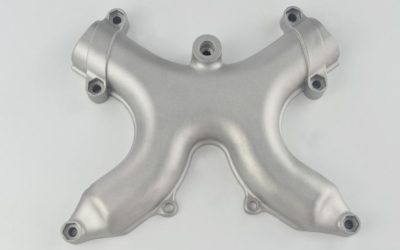Magnesium Die Casting Alloys 101
Diecasting is currently being revolutionized by magnesium as it presents a viable alternative to traditional materials like aluminum. The lightest structural metals it enables significant weight savings in final products, which is essential for fuel efficiency and reduction of environmental impacts related to automobile emissions. There has been remarkable research progress that expands the capabilities of magnesium and makes it a good candidate for different high-performance applications.
This is why magnesium leads in die casting:
Magnesium has a density of about 1.7 g/cm³ compared to aluminum (2.7 g/cm³) [1]. This leads to massive reductions in the weight of components, including those for vehicles, thereby improving fuel efficiency and enhancing electronic device portability.
Magnesium has an excellent strength-to-weight ratio. Some studies have shown that specific magnesium alloys, such as AZ91D can achieve tensile strengths over 230 MPa [2]. These attributes make them well-suited for parts that need both durable and lightweight simultaneously because they possess lightness and strength.
For example, recent research investigated incorporating some rare earth elements into magnesium to form alloys that are better able to resist deformation at high temperatures [3].
Source:
- Magnesium in Casting Technology by Yucheng Bai, et al. (2012)
- Evaluation of Magnesium Die-Casting Alloys for Elevated Temperature Applications: Microstructure, Tensile Properties, and Creep Resistance by Sergio Cáceres, et al. (2015)
- Microstructure and Creep Resistance of Mg-Gd-Y Alloys by X.M. Wang, et al. (2020)
AZ91, AM60, and AM50 are the most commonly used alloys in die casting. All are based on the Mg-AI system.
Also Read: Aluminum Alloy Die Casting
In this article, we will learn about
- The global scope of magnesium die casting alloys,
- Highlighting the advantages of these materials,
- Magnesium Alloys Properties
- Brief Comparison of Common Magnesium Alloys for Die Casting
We’ll also highlight the significant advantages of using magnesium die casting alloys, such as:
- exceptional strength
- lightweight nature
- suitability for producing intricate shapes
We’ll also discuss the various kinds of magnesium die available for casting alloys, highlighting their unique qualities and ideal uses.
In the end, we’ll examine how magnesium die casting compares to other widely known methods, such as aluminum die casting, and discuss the interesting prospects of this technology’s future potential.
We hope that by the end of this exploration, you will have an extensive knowledge of magnesium die casting alloys and their importance in modern manufacturing.
Let’s Understand Magnesium as An Alloy
The most famous magnesium die casting alloy is AZ91D. Magnesium makes different alloys when combined with other metals. Some of the most common magnesium are:
- AM60B
- AM50A
- AM20
- AE42
- AS41B
What are Magnesium Alloys?
Magnesium alloys are metals in which magnesium (Mg) is the principal element, typically constituting over 90% of the composition. Pure magnesium is modified by adding alloying elements like aluminum (Al), zinc (Zn), and manganese (Mn).
Advantages of Magnesium Die Casting
The uniqueness of magnesium die casting is in that it can bring several key advantages to the manufacturing process. Below, we will elaborate further on some of the main advantages:
Lightweight and high strength-to-weight ratio.
As mentioned above, magnesium is the lightest structural metal. It provides the strength and low weight base for extremely lightweight components, which results in major advantages for many businesses.
Improved Dimensional Precision and Stability
The die casting method guarantees outstanding dimensional accuracy and stability in the final product. This makes assembling parts with other components easier and with the same high standards.
Excellent Machinability and Finishing Details
Magnesium Die castings offer good machinability. It makes shaping and modification of the material easier after casting. Additionally, these castings usually have a superior surface polish, reducing the required additional processing level.
Outstanding Thermal and Electrical Conductivity
Good thermal and electrical conductivity are the properties of magnesium alloys. Accordingly, they can find use in situations where electrical conductivity or heat dissipation is necessary.
High Recyclability
Highly recyclable metal is magnesium. At the end of life of a product, its parts made out of magnesium can be easily reused and recycled thereby reducing environmental footprint.
Magnesium Die Casting Process
This part will take us through the basics of magnesium die casting and what it entails as well as show step by step how molten magnesium transforms into complex valuable parts.
The process involves using a reusable mould called a die to manufacture intricate and dimensionally precise products.
Some necessary steps are given below:
Die Preparation and Cleaning
The die is thoroughly cleaned and lubricated to ensure a perfect casting process and avoid defects. This process is necessary to maintain the die’s integrity and produce castings of the highest quality.
Melting and Alloying Magnesium
Magnesium is melted in a furnace at extremely high temperatures. Such alloying elements may be injected into the molten metal at this stage to form the required final product attributes such as increased strength or corrosion resistance.
Injection and Solidification
Under high pressure, the molten magnesium is injected into the die cavity. This cavity has the same shape as the required finished product. After injection of molten magnesium, it quickly cools down and hardens. After no moment, magnesium takes the shape of the die.
Part Removal and Finishing
After solidification, the newly created part is removed from the die. After the casting process, any extra material, such as sprues or runners, is extracted. After removing extra materials, further finishing techniques can be applied to the part’s surface based on the application’s requirements.
Today, this method allows us to manufacture complex magnesium parts in bulk quantities with outstanding dimensional accuracy and reliable quality.
Magnesium Die Casting Metals
Careful selection of magnesium die casting alloys can make the product successful. Choosing the suitable alloy is crucial as it determines a finished product’s final features and performance.
Choosing the Best Magnesium Alloy
Magnesium alloys such as AZ91D, and AM50A/AM60B are becoming increasingly popular for automotive and transportation sectors.
These new alloys have improved strength, better high-temperature characteristics, more ductile, and higher thermal conductivity.
Before choosing the best magnesium die casting alloy, you must have complete knowledge of the desired qualities for the finished product.
Here are some crucial factors when you make this critical decision.
Strength: An important factor in it is the required strength of the different components to be used. Yield strength, tensile strength and fatigue resistance are variable across different alloys.
Corrosion Resistance: Also essential is taking into consideration the environment in which a part will function. They have higher corrosion resistance compared to several other metals, making them foremost for severe surroundings.
Castability: For instance, a molten metal must be capable of flowing well into die cavity and filling intricate shapes. Good casting alloys ensure low defects and high rate of casting stress.
Machinability: Furthermore, how easy an object which has been cast can be machined so as to give shape or change its form should be considered. Appropriate machining alloy permits efficacious customization and post-processing.
Today, magnesium die casting alloys that offer optimum strength and performance can be chosen by manufacturers who consider these factors together with what can be demanded from the applications.
Common Magnesium Alloys
Many types of magnesium die casting alloys are available on the market. Each alloy has unique qualities and perfect uses.
Now, let’s explore the properties of the most commonly used alloys.
AZ91D: The Champion of All Rounds
AZ91D is the most commonly used magnesium die casting alloy. It has 9% aluminum and 1% zinc. It provides an attractive blend of corrosion resistance, toughness, and high castability. These features make AZ91D a flexible option for many applications, such as engine parts, housings, consumer electronics, and automotive sectors.
3.2.2 AM Series (AM 50A, AM20, AM60B): Focusing on Toughness
The AM series features an alloyed group renowned for remarkable impact resistance, and toughness. These features make them perfect for parts for physical resistance or impact. AM series alloys are used in the aerospace and automotive industries for brackets, wheels, and other parts.
3.2.3 AS41B and AE42: High Temperature Alloys
AS41B and AE42 alloys are excellent options for applications demanding high temperatures. These alloys show excellent ductility, creep resistance, and strength at high temperatures, making them suitable for engine and transmission parts where heat resistance is necessary.
It is important to note that this is a partial list of magnesium die casting alloys. There are many other types of magnesium die casting alloys that are developed to meet specific requirements. Choosing the perfect alloy requires a full grasp of your desired qualities and unique application requirements.
Properties of Magnesium Die Casting Alloys
Understanding the key features of different magnesium die casting alloys allows for more educated decisions.
Here’s a brief comparison of some salient features of magnesium die casting alloys:
Applications of Magnesium Die casting Alloys
Magnesium is known for its lightweight alloy castings. They are increasingly becoming popular in structural automotive applications. Magnesium alloys are lightweight, outstanding strength-to-weight ratio, dimensional repeatability, and near-net-shape.
One recent example is the 2017 Chrysler Pacifica, which uses magnesium die casting to replace nine components in the liftgate’s structural core, reducing the weight of the liftgate assembly by about 50%.
As we know, magnesium die casting alloys have remarkable qualities. They have many applications in a variety of sectors.
We will now look into a number of the most popular sectors of this innovative technology.
Automotive Industry: Magnesium die casting alloys are very good for automotive industry because they have light weight and durability, thus making them perfect for fuel efficiency. They are used for manufacturing engine parts, brackets, wheels etc.
Consumer Electronics: Magnesium die casting alloys are best suited to those who want lightweight portable and durable devices.
The magnesium die casting process has improved user experience, it is best for laptop casings and camera bodies that are remarkably durable and comfortable to hold.
Aerospace Industry: Magnesium die casting alloys are essential in the aerospace industry because every gram matter there. These alloys help aircraft to increase their cargo capacity and fuel efficiency. They are also helpful for aircraft performance and range.
Medical Equipment: Magnesium die casting’s strength-to-weight ratio is helpful in the medical equipment industry. These alloys are very lightweight. These give patients the strength and durability they need in wheelchairs and crutches.
Comparison with Aluminum Die Casting
Both die casting aluminum and magnesium are extensively used for the production of light weight, complex parts in large amounts. However, their peculiar characteristics must be understood to make a choice between them.
Similarities
Light Weight: Magnesium and aluminum are both lightweight metals. This is why die casting made of these two metals is a good solution for weight reduction applications.
Strength and Lightness: Both techniques have high strength-to-weight ratios which makes them suitable for the production of strong yet lightweight components.
Complex Shapes Made Easy: Magnesium and Aluminum Die Castings can create intricate, detailed designs with excellent dimensional accuracy.
Differences
The Lightweight Hero: In terms of pure lightness, magnesium is unmatched by any other material. With significant weight reductions over aluminum, it becomes the lightest structural metal.
Shielding Superiority: For parts that should be protected from electromagnetic waves (Thai), magnesium is the best material due to its exceptional shielding quality against electromagnetic interference (EMI) and radio frequency interference (RFI).
Corrosion Resistance: Aluminum usually has a higher degree of corrosion resistance than magnesium. As such, it becomes the more preferred alternative for applications exposed to caustic substances or harsh environments.
Ultimately, the choice between magnesium or aluminum die casting depends on the specific needs of an application.
Conclusion
The magnesium die casting industry has a bright future. As new alloys with greater qualities constantly develop, this technology can completely change how we design and manufacture high-performance, lightweight parts for different applications.






0 Comments